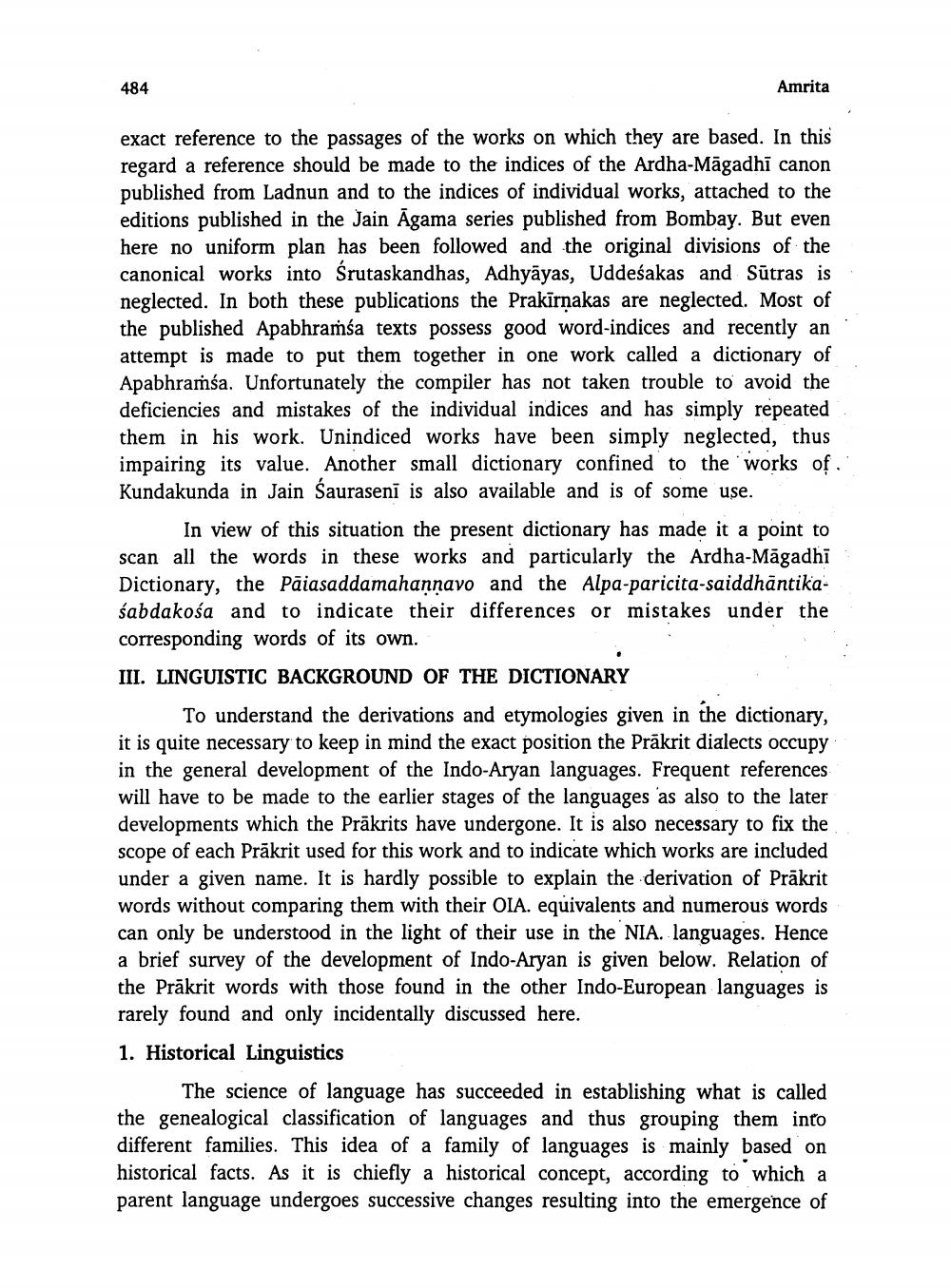________________
484
Amrita
exact reference to the passages of the works on which they are based. In this regard a reference should be made to the indices of the Ardha-Magadhi canon published from Ladnun and to the indices of individual works, attached to the editions published in the Jain Agama series published from Bombay. But even here no uniform plan has been followed and the original divisions of the canonical works into Śrutaskandhas, Adhyāyas, Uddeśakas and Sutras is neglected. In both these publications the Prakirṇakas are neglected. Most of the published Apabhramsa texts possess good word-indices and recently an attempt is made to put them together in one work called a dictionary of Apabhramsa. Unfortunately the compiler has not taken trouble to avoid the deficiencies and mistakes of the individual indices and has simply repeated them in his work. Unindiced works have been simply neglected, thus impairing its value. Another small dictionary confined to the works of. Kundakunda in Jain Śauraseni is also available and is of some use.
In view of this situation the present dictionary has made it a point to scan all the words in these works and particularly the Ardha-Māgadhi Dictionary, the Paiasaddamahanṇavo and the Alpa-paricita-saiddhantikasabdakosa and to indicate their differences or mistakes under the corresponding words of its own.
III. LINGUISTIC BACKGROUND OF THE DICTIONARY
To understand the derivations and etymologies given in the dictionary, it is quite necessary to keep in mind the exact position the Prakrit dialects occupy in the general development of the Indo-Aryan languages. Frequent references will have to be made to the earlier stages of the languages as also to the later developments which the Prakrits have undergone. It is also necessary to fix the scope of each Präkrit used for this work and to indicate which works are included under a given name. It is hardly possible to explain the derivation of Prakrit words without comparing them with their OIA. equivalents and numerous words can only be understood in the light of their use in the NIA. languages. Hence a brief survey of the development of Indo-Aryan is given below. Relation of the Prakrit words with those found in the other Indo-European languages is rarely found and only incidentally discussed here.
1. Historical Linguistics
The science of language has succeeded in establishing what is called the genealogical classification of languages and thus grouping them into different families. This idea of a family of languages is mainly based on historical facts. As it is chiefly a historical concept, according to which a parent language undergoes successive changes resulting into the emergence of




